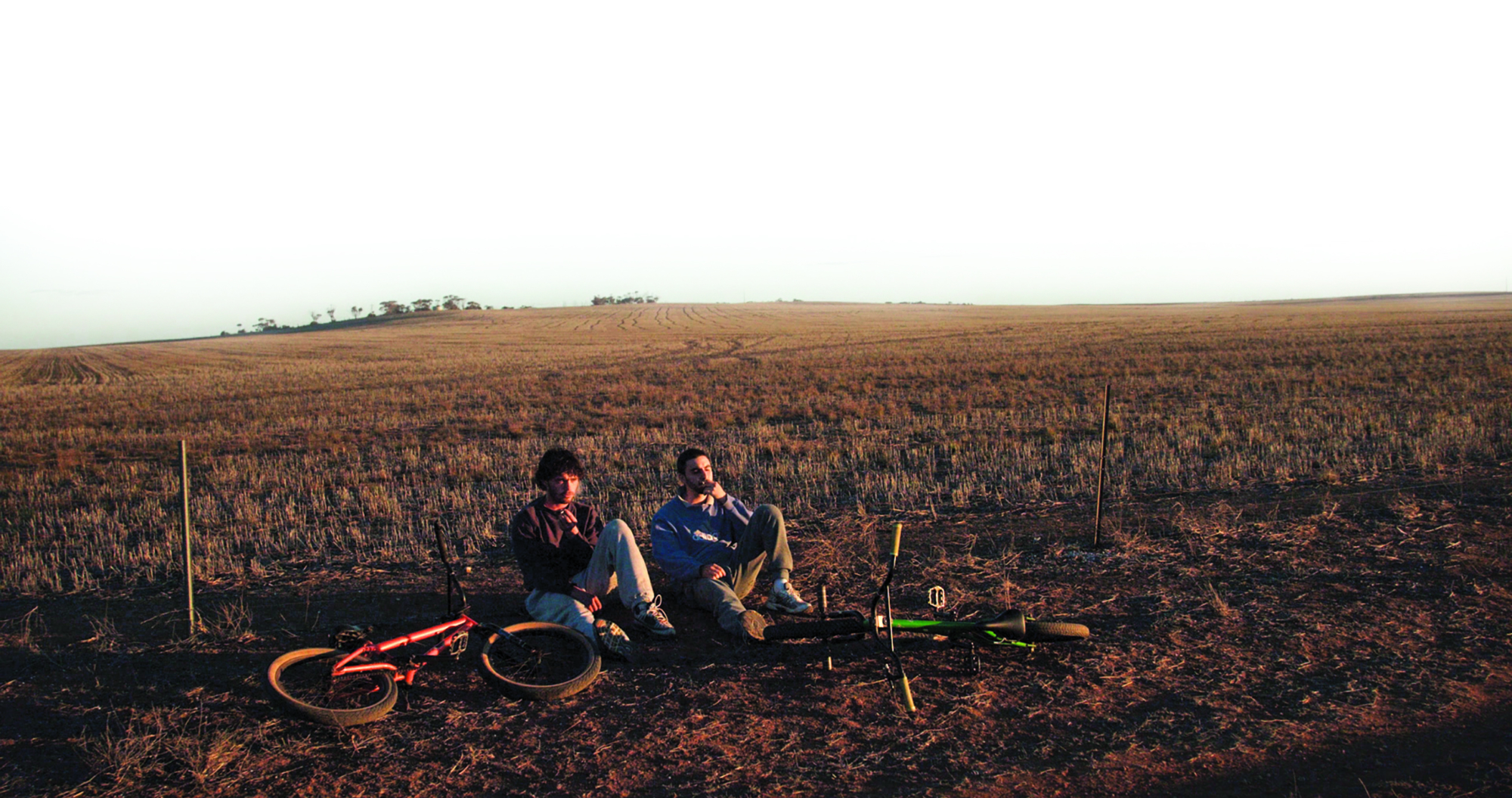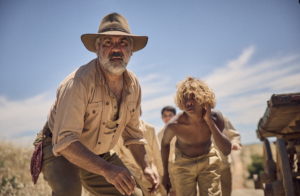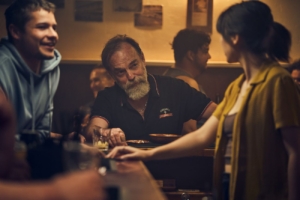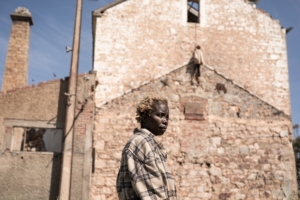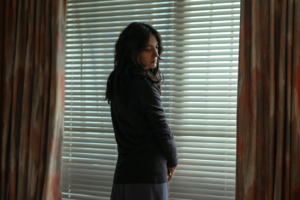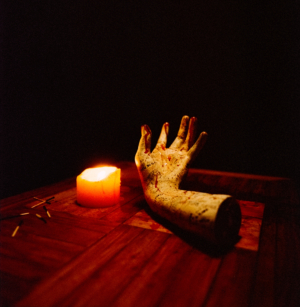Dry Winter (2021) opens with a bang, as fireworks set off from a dusty country road flare up and explode across the night sky. But this is not a celebration; it’s just another passing distraction, a strategy for relieving the monotony of existence in a regional Australian town with no prospects and no future. The title suggests a seasonal affliction, but the hard times ahead here are more than a temporary affair.
Running at an economical 62 minutes, this short feature was put together by a group of first-time filmmakers, many of them recent graduates from the film program at Adelaide’s Flinders University, including director Kyle Davis, producer Michael Harpas, writer Bridget McDonald and cinematographer/composer/editor Gere Fuss. They shot in the South Australian town of Cowell – situated on the Eyre Peninsula, a five-and-a-half-hour drive from Adelaide – working largely with non-professional actors. Dry Winter’s slender, elliptical narrative concerns the lives of an uneasy young couple and their circle of mates as they cycle through days of menial labour enlivened only by the minor entertainments offered by fireworks, cars, drugs and videogames. Jake (Andrew Phillips), who drifts between odd jobs, is rarely without cigarette, beer, joint, pipe or game controller in hand. Kelly (Courtney Kelly), who works at a local petrol station, is diffident but less distractible, and visibly unfulfilled. Gradually, a thread of conflict arises out of their mismatched expectations about their dead-end lives.
Some of the ingredients here recall Australian author Shaun Prescott’s 2017 novel The Town, which took a dryly absurdist approach to a similar situation, describing the humdrum existences of young people trapped in a regional community that is, for all intents and purposes, collapsing around them – a collapse that Prescott dramatises as the spontaneous manifestation of a series of black voids that literally pull sections of the town into non-existence. In his novel, Prescott gives his characters idiosyncrasies of personality – a taste for music, or local history, or ambitions in the creative arts – that give their lives some internal structure, and that eventually propel them towards an ambiguous escape. In Dry Winter, by contrast, Jake and Kelly register more as types than as people, their particular desires and needs (beyond, in Jake’s case, smoking, drinking, fishing and gaming) – so inchoate as to be unidentifiable.
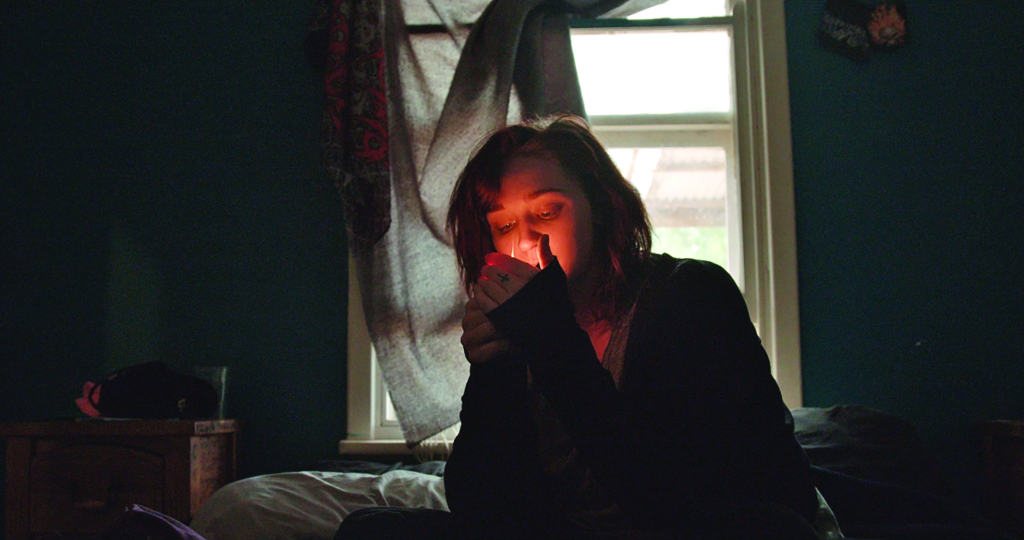
This is, to some extent, a dramatic weakness; the filmmakers perhaps take it for granted that the audience will grasp that people in these socio-economic circumstances should and do yearn for more, without that yearning needing to be invested with narrative detail or emotional force. But this delimitation of character psychology also makes some sense within the scope of Dry Winter’s aesthetic ambitions, which are more documentary and experiential than conventionally dramatic. Program notes for the film’s run at the 2021 Melbourne International Film Festival make comparisons to the work of fellow Australian filmmakers Amiel Courtin-Wilson (Hail, 2011; Bastardy, 2008) and Alena Lodkina (Strange Colours, 2017),[1]See ‘Dry Winter’, Melbourne International Film Festival website, <https://miff.com.au/program/film/dry-winter>, accessed 10 August 2021. with which the film shares its use of non-professional actors, semi-ethnographic approach and site-specific ambience. These points of reference will be handy for marketers trying to orient the expectations of local viewers, and they also suggest some savvy filmmaker strategising. Whether or not the examples of Courtin-Wilson and Lodkina were actually on the minds of the Dry Winter team, these filmmakers represent a notably sensible and replicable vision of what low-budget Australian film production could look like and where it can go.
Lodkina and Courtin-Wilson have generated significant critical kudos for works mounted on a modest scale, in a mode that does not align with dominant Australian narrative styles or their American antecedents but rather speaks to an international film-and-video-art lineage that crosses between theatre, festival and even gallery contexts: Strange Colours premiered at and was completed with the support of the 2017 Venice Biennale; Courtin-Wilson’s The Silent Eye (2016), which Lodkina co-edited, was commissioned by the Whitney Museum of American Art in New York. Fittingly, before its recent festival turn in Melbourne, Dry Winter travelled first to premiere at this year’s Visions du Réel festival in Nyon, Switzerland.
These connections also place the film firmly within the developing movement of what screen scholar Claire Henry has described as ‘Australian Sensory Cinema’,[2]Claire Henry, ‘Carving Out an Australian Sensory Cinema’, in Mark David Ryan & Ben Goldsmith (eds), Australian Screen in the 2000s, Springer International Publishing, Cham, Switzerland, 2017, pp. 261–83. alongside other recent works like Samson & Delilah (Warwick Thornton, 2009), Snowtown (Justin Kurzel, 2011), Fell (Kasimir Burgess, 2014), Partisan (Ariel Kleiman, 2015) and Tanna (Martin Butler & Bentley Dean, 2015). Many of these films demonstrate a similar interest in the inertia and constrained possibilities of regional and suburban Australian communities, and all share – as Henry posits – a prioritisation of sensuous experience and the pursuit of affect through medium-specific qualities of image and sound.

Dry Winter announces its own interest in sensuous experience by eschewing conventional dramatic, dialogue-driven scenes in favour of mostly wordless stretches of semi-documentary recordings of physical labour processes: Kelly doing household chores, or wiping the pumps at the petrol station; Jake folding up bundles of wool in the shearing shed where he intermittently spends his days; Jake and his mate Liam (Harpas) baiting lines to cast into a river from a highway overpass. Conversation, when it occurs, is mixed low and realistically inexpressive, serving a largely textural rather than informative function. These sequences are punctuated by brief spectacles – the show of fireworks that opens the film, a striking midway scene of a red sedan doing a backyard burnout, and a bonfire that closes out the end credits – that reveal the modest and semi-destructive entertainments the characters use to break up their days.
But whereas some films in the sensory tradition seek to achieve a pure impressionism that merges the world of the film with the mental states of its characters – as in Hail and Fell, which for long stretches go fully inside the disordered psychologies of their leads – Dry Winter keeps us at arm’s length. The images are largely observational, though some insert shots of land and sky reach for expressivity. One can also sometimes sense the technical limitations of what is, after all, a post-student work, particularly in the use of sound; while Henry emphasises the importance of sound design in sensory films’ development of affect, Dry Winter’s audio is comparatively thin and undetailed, and noticeably varies in depth and texture from scene to scene.
For Henry, the emergence of these works invites critical reflection on how local filmmakers wield the stylistic affordances of the medium, rather than on their engagement with the traditional narrative tropes and character types of Australian cinema and their representations of ‘Australianness’ – that over-rehearsed foundational topic of local film discourse. But at the risk of sidestepping that promising opportunity, I want to suggest that Dry Winter’s disengagement with traditional tropes and character archetypes deserves commentary. Here, together with Lodkina’s debut feature, we can see fresh entries in the Australian Sensory Cinema movement developing a kind of critical generational perspective on the key thematic terrain of Australian film.
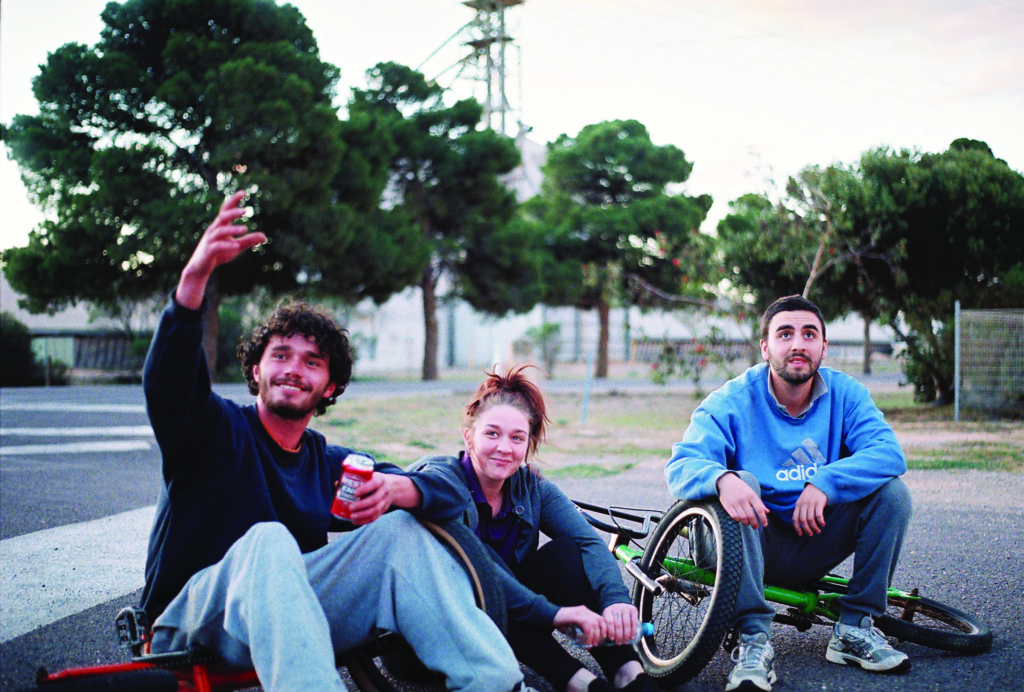
In a Metro article on Strange Colours, critic Adrian Martin wrote that the film is refreshingly free both of ‘psychosexual menace’ and of a ‘Gothic sense of nature itself as a threatening presence’.[3]Adrian Martin, ‘Heavy Here and Now: Alena Lodkina’s Strange Colours’, Metro, no. 197, 2018, p. 20. Regarding the former, he has in mind Lodkina’s treatment of the community of old blokes who inhabit the opal-mining town of Lightning Ridge in northern New South Wales, whom the film portrays in terms alternative to conventional depictions of regional male ‘ocker’ types. Though taciturn and stoic, they are also philosophically open, emotionally vulnerable and freely accepting of the young woman – central character Milena (Kate Cheel) – who tarries among them. For the latter, Martin refers to the way Lodkina’s film avoids the traditional approach through which local films depict the Australian landscape: as a dangerous, oppressive environment for its white characters and a force that ‘unsettles’ settler-colonial society, a trope that has roots back in the key works of the Australian Film Revival, such as Picnic at Hanging Rock (Peter Weir, 1975), and beyond. Strange Colours instead depicts its characters as being both mobile and unattached – everyone in Lightning Ridge seems to be from someplace else – and in a kind of deep communion with the land, as symbolised by their mining shafts sunk into the earth.
Dry Winter is likewise liberated from these conventions. The boys in the film are uncommunicative – Jake is at his most animated only after several beers and while reminiscing over a memorable flathead he caught – but also tender, companionable and not in possession of the overt, implicitly violent, machismo that typifies the on-screen rural Australian male. They are casually physically close with each other, as we see in scenes in which Jake gives Liam a haircut and another friend gives Jake a homemade tattoo. In depicting the troubled relationship between Kelly and Jake, the film avoids conventional tropes of toxic Australian masculinity and its dysfunctions, apart from a brief moment in which she attempts to curtail his drinking. Their situation is one of inertia rather than harm; Jake is not so much a bad partner as simply no partner at all.
In these films, as well as in Prescott’s novel, the towns of settler-colonial Australian society appear atomised, anonymised, doomed or resigned to impermanence.
There is also a similar feeling of ambiguity in the characters’ relation to the environment. On the one hand, Jake and Liam’s fishing in the local river, fence-building at a local farm and work at the shearing shed suggests a participation in practices of land cultivation and management; but on the other, these activities are menial or simply recreational, and no more anchoring to their lives than videogames or pokies at the pub. Jake and Kelly have a house and a growing brood of dogs, but it is not much of a home, and no less a liminal space than the highway petrol stop where Kelly spends her days. Davis and his team shoot Cowell as a kind of Australian anywhere, with few overt indicators of place. Fuss’ handheld compositions tend to be tight on the performers and unconcerned with delineating the terrain around them. There is little ‘featuring’ of the local environment or its glories, of the sort that gives the land both its touristy aspect and its menacing anima in traditional Australian cinema.

If Dry Winter and Strange Colours resist traditional Australian tropes and character archetypes, perhaps they also record their cultural dissolution. In these films, as well as in Prescott’s novel (and it is significant that these are all works from young artists), the towns of settler-colonial Australian society appear atomised, anonymised, doomed or resigned to impermanence, their inhabitants temporarily engaged (or perhaps entrapped) by work on the land but ultimately – and originally – transitory. This all cumulatively gestures at something like a post-Australian Gothic sensibility, in which the settler-colonial ‘civilising’ project of farms, towns and industry – always threatened by the landscape itself, and haunted by the repressed crimes of dispossession – has now decayed, and its hard men have grown into senescence and isolation, leaving yawning gaps that the uprooted younger generations cannot fill and might not care to. Their sensory approach to textual construction, with its fracturing of the traditional diegesis in favour of pure mood, in effect mirrors the fracturing of their young characters’ worlds.
Of its antecedents in the sensory movement, the film that Dry Winter perhaps most closely resembles in its feeling and situations is Samson & Delilah, with each film reflecting the plight of a young couple confronting socio-economic deprivation. But whereas that film ultimately upholds the painful, strained but necessary relationship of solidarity and care its Indigenous leads share, Dry Winter ends on a note of separation and uncertainty as Kelly packs her bags and drives away from Jake without a word. A final sequence of aerial shots showing a cloudy sky stretching out over undifferentiated rolling brown hills forecloses any mood of optimism and possibility: she might have gotten out, but there is no particular place to go.
Endnotes
| 1 | See ‘Dry Winter’, Melbourne International Film Festival website, <https://miff.com.au/program/film/dry-winter>, accessed 10 August 2021. |
|---|---|
| 2 | Claire Henry, ‘Carving Out an Australian Sensory Cinema’, in Mark David Ryan & Ben Goldsmith (eds), Australian Screen in the 2000s, Springer International Publishing, Cham, Switzerland, 2017, pp. 261–83. |
| 3 | Adrian Martin, ‘Heavy Here and Now: Alena Lodkina’s Strange Colours’, Metro, no. 197, 2018, p. 20. |
